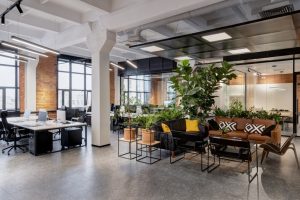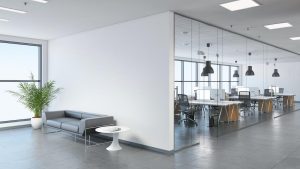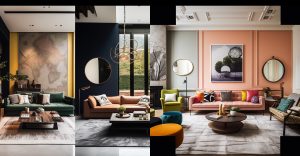The world of interior design is a vibrant tableau of evolving design trends that redefine how we perceive and interact with our spaces. As we step into 2024, several key trends are shaping the future of home and commercial interiors, driven by advancements in technology, shifting societal values towards sustainability, and a growing desire for flexibility and personalization in our living and working environments. This extensive guide delves into the nuances of these trends, offering a detailed roadmap for those looking to infuse their spaces with a contemporary edge.
- Sustainable Designs: Focus on biophilic elements and eco-friendly materials.
- Tech Integration: Advancements in smart home systems and VR/AR for design visualization.
- Space Flexibility: Rise of adaptive and hybrid spaces for multi-use purposes.
- Aesthetic Trends: Blend of minimalism and maximalism, with a resurgence of retro and vintage styles.
- Future Outlook: Innovations in sustainable materials, AI in smart technology, and a deeper integration of psychological adaptability in designs.
Sustainable and Eco-Friendly Design Trends
Deep Dive into Biophilic Design Elements
Biophilic design goes beyond mere aesthetics, embedding the essence of nature into the fabric of our daily spaces to foster a deeper connection between humans and the natural world. This trend is underscored by a growing body of research highlighting its benefits for mental health, productivity, and overall well-being. Key elements include the integration of direct or indirect elements of nature into interior design, such as natural lighting, ventilation, landscape features, and other elements that mimic natural systems.
Future Prediction: Expect to see more innovative uses of technology to enhance biophilic design, such as digital walls displaying changing natural landscapes or advanced sound systems that replicate natural sounds, further blurring the lines between indoor and outdoor spaces.
Advancements in Sustainable Materials and Practices
The push for sustainable materials is evolving beyond common solutions to include bio-based materials and advances in recycling technologies. Materials like mycelium-based composites, recycled plastic and metal alloys, and bio-glass are becoming more prevalent, offering new possibilities for sustainable and aesthetically pleasing designs.
Future Prediction: The development of new materials from previously unused resources, such as algae or carbon capture technologies, will offer even more options for eco-friendly designs that don’t compromise on style or durability.
Emerging Technology in Interior Design Trends
The Evolution of Smart Homes and Commercial Spaces
Smart technology is becoming more sophisticated, with AI-driven systems capable of learning from inhabitants’ behaviors to optimize energy use, enhance security, and personalize living experiences. Innovations such as OLED screens that double as windows or art displays, and furniture that adjusts its form to suit the user’s posture, are on the horizon.
Future Prediction: The next wave of smart homes and commercial spaces will likely incorporate more AI and machine learning to predict and adapt to users’ needs even before they articulate them, offering unprecedented levels of comfort and convenience.
The Impact of Virtual and Augmented Reality in Design Trends
The application of VR and AR in design is expanding, enabling not just visualization but also interaction with virtual spaces in real-time. These technologies are becoming invaluable tools for designers, allowing for more collaborative and iterative design processes.
Future Prediction: As VR and AR technology becomes more accessible, we can anticipate its integration into everyday design decisions, enabling homeowners and business owners to experiment with design changes in a virtual environment before making any physical alterations.
Flexible and Multifunctional Space Design Trends
Beyond Adaptive Design Solutions
Adaptive design is evolving to include not just physical flexibility but also emotional and psychological adaptability. Spaces are being designed to not only change function with movable elements but also to adapt to the emotional states and needs of its users, using lighting, color, and technology to create environments that can calm, energize, or inspire as needed.
Future Prediction: The future of adaptive design lies in the seamless integration of environmental psychology, where every element of a space is designed to support the well-being and productivity of its occupants.
The Rise of Hybrid Commercial Space Designs
Hybrid commercial spaces are becoming more sophisticated, with designs that seamlessly integrate various functions and services. From bookstores that offer maker spaces to restaurants with co-working areas, these spaces are designed to foster community and creativity.
Future Prediction: Expect to see a rise in hybrid spaces that cater to niche audiences, offering highly specialized combinations of services and experiences that reflect the diverse interests and needs of modern society.
Aesthetic Movements and Styles in Design Trends 2024
Reinterpreting Minimalism and Maximalism
As we move further into the decade and into the design trends, the dialogue between minimalism and maximalism is becoming more nuanced, with designers finding innovative ways to blend elements of both to create spaces that are both functional and expressive. The focus is on creating harmony and balance, using minimalism to define the structure of a space while employing maximalist elements to inject personality and vibrancy.
Future Prediction: The interplay between these two styles will likely become more dynamic, with the emergence of ‘minimalist maximalism’—a style that uses the principles of minimalism to organize space while adopting a maximalist approach to textures, colors, and decorative elements.
The Evolution of Retro and Vintage Style Revivals
The nostalgia-driven appeal of retro and vintage design styles is being reimagined with a modern twist. Designers are increasingly drawing on a wider range of historical periods and styles, combining them with contemporary materials and technologies to create spaces that are both reminiscent and forward-looking.
Future Prediction: The revival of past styles will likely become more eclectic, with designers and homeowners mixing elements from different eras and cultures to create unique, personalized spaces that tell a story.
Conclusion: Envisioning the Future of Design in 2024
The design trends of 2024 reflect a complex interplay of technology, sustainability, flexibility, and personal expression. As we look to the future, it’s clear that the field of interior design is set on a path of rapid evolution, driven by innovations in materials, technologies, and an ever-deepening understanding of human needs and environmental responsibilities. These trends offer a glimpse into a future where our homes and commercial spaces are not just places of refuge or business but are integral to our well-being, creativity, and connection to the world around us.
For those seeking expert guidance and services in bringing the latest design trends of 2024 into their homes and commercial spaces, AA&G Services Construction offers a wealth of experience and a commitment to excellence. Specializing in sustainable, flexible, and technologically integrated solutions, their team of professionals is at the forefront of transforming spaces to reflect contemporary aesthetics while prioritizing functionality and environmental responsibility.
Whether you’re looking to incorporate biophilic elements, adapt your space with smart technology, or embrace the balance of minimalism and maximalism, AA&G Services Construction provides the expertise necessary to realize your vision. Discover more about their innovative approach and comprehensive services by visiting AA&G Services Construction Company Vancouver.



